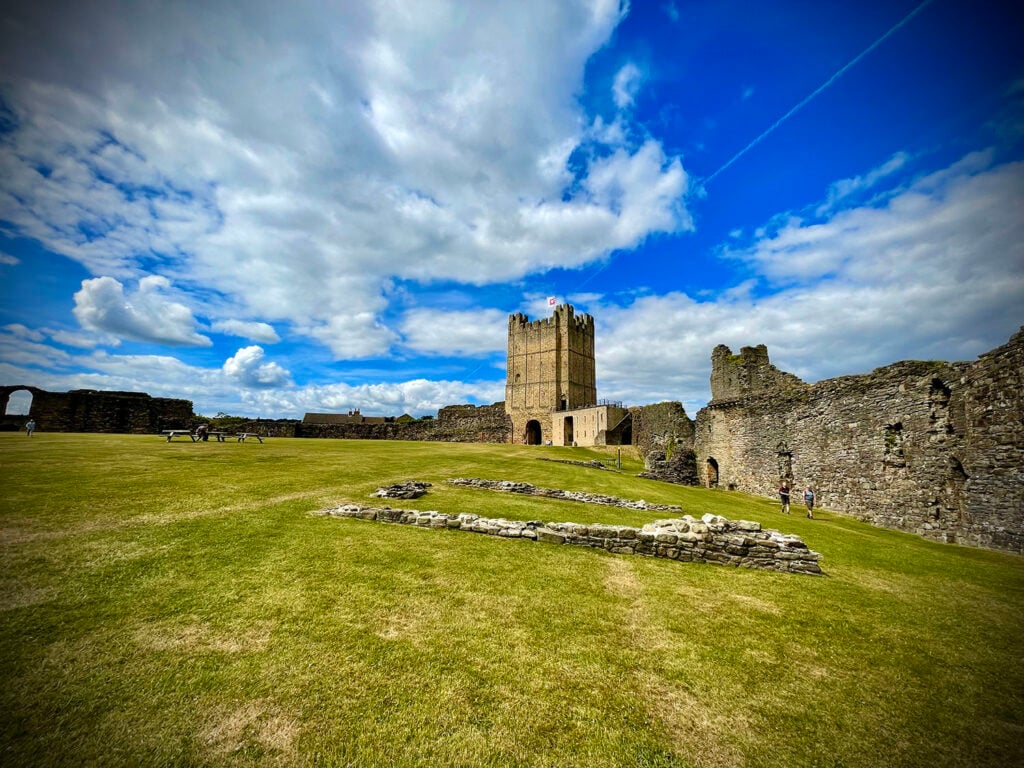Perched like the delicious, iced decoration atop a wedding cake Richmond castle stands proud above the sprawling medieval market town of Richmond in North Yorkshire on a cliff overlooking the River Swale.

Now the best-preserved early Norman fortress in England, its structure was likely commenced in the 1070 or 1080s to defend against Anglo-Saxon nobles who had lost their land and power throughout the North and Border regions in the aftermath of the Norman Conquest of 1066. Constructed by Count Alan Rufus, 1st Lord of Richmond, and a Breton nobleman, kinsman and companion of William the Conqueror, it was later expanded in the 12th century by his great nephew Conan, who built the dominating square keep. So significant a structure was it that under Count Alan’s nephew, also named Alan, it housed a mint, issuing coins to support King Stephen.
Just four centuries later, successive schisms and conflicts, notably repeated raids by the Scottish, had inflicted great damage om the castle, so much so that by Henry VIII’s reign, it was considered derelict and, in 1609, a survey described it as being in a decayed state. The castle remained in this condition for the next 300 years until it passed to the Dukes of Richmond in 1675. However, it wasn’t until the work of artist JMW Turner and others of the late 18th and early 19th century that admiration of the castle as a romantic ruin was first garnered, and, as a result, the town became a fashionable place for tourists to visit.
Yet Richmond Castle’s use as a fortification did not cease in the 20th century. During World War I, the 19th-century detention block held conscientious objectors, while the Second World War saw the keep put to use as an enemy watchtower while disorderly soldiers were detained and punished in the cells. Both wars saw prisoners leaving their mark in the form of graffiti which has recently been recorded via a volunteer led Heritage Lottery Funded project.
Thank you for sharing the history of this edifice, Emma!